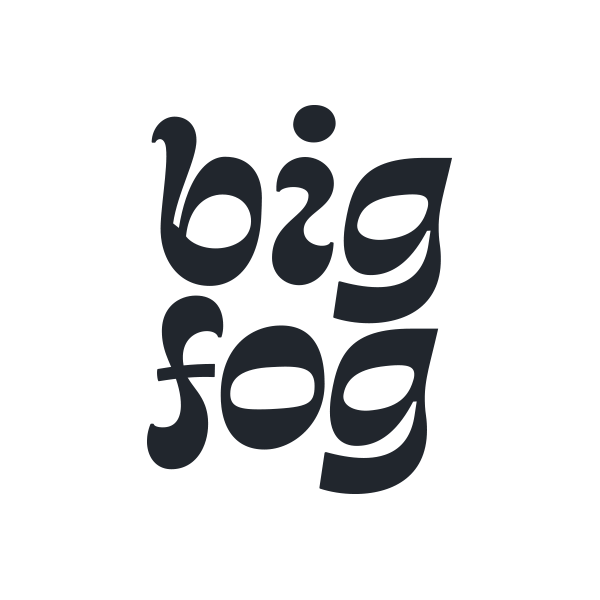
by Valerie Burgess
June 07, 2023
One of the main benefits of creating illustrations and graphics digitally is the wide range of mediums you can imitate with the tap of your finger. Stipples, paintbrushes, colored pencils, and patterns all sit right next to each other in your Brush Library. But when there are thousands of brushes to choose from, it can be overwhelming to try and narrow down your favorites. Over the last few years of illustrating in Procreate, these 10 are my favorites that I find myself returning to for adding a fuzzy, textured effect to a digital medium.
1. 6B Pencil
Procreate Default
This has been my go-to brush from the very beginning, and nothing has ever really come close. It’s perfect for rough sketching a concept, loosely shading a form, or adding fine detail. Basically, the 6B Pencil does it all. This brush mimics a 6B softness graphic pencil with deep darks and a coarse grain. The brush’s extreme sensitivity to pressure echoes the softness of a 6B pencil, and the way soft graphite dissolves onto your page if you press hard enough. When tilted, this brush switches to a broad, grainy stroke with a sparser fill.
2. Soft Waxy
True Grit Texture Supply
A new favorite of mine from the True Grit Texture Supply Chromograph pack: Soft Waxy. Like a waxy pencil in real life, this brush has a stickier quality than the 6B pencil above. Without much pressure sensitivity or particularly deep darks, the Soft Waxy brush creates coarsely edged lines that feel like they’re sitting on top of your (digital) paper instead of bleeding into it.
3. MaxU Conte
MaxPacks
The Conté brush from Max Ulichney’s Painter’s MaxPack is the backbone of my shading technique for large areas, especially in my landscapes. It’s characterized by a large tonal variation, coarse grain, and a big ol’ chunky rectangle for a brushstroke. With a strong pressure sensitivity, the MaxU Conté brush allows me to capture a full spectrum of shadow, from a light speckling at the sun kissed top of a mountain to the deep, rich dark color of the shadows at the base.
4. RSCO Riso Wet 90%
RetroSupply
Like many, I’m a recent convert to the risograph cult. Unfortunately our studio only has two color drums for our RZ220 machine, which can be limiting. When I’m working on an illustration with more than two colors and want that riso-like texture added to a digital artwork, I reach for the RSCO Riso Wet 90% brush. This brush works beautifully in large swashes. It’s been my favorite for adding character to a body of water or a wide expanse of sky. When used on top of a fill with the Multiply blend mode, colors become more saturated and get the perfect minor variations in tone and grit throughout the object.
5. Waxy Nib
True Grit Texture Supply
Much like the Soft Waxy Pen of True Grit Texture Supply’s Chromagraph pack, this brush is defined by the rough, sticky edge of the brush stroke. Unlike the Soft Waxy, this brush reacts quickly to delicate changes in pressure. At the lightest stroke, the ink barely skips along the artboard leaving soft scratches of color. With more pressure the inky qualities shine, leaving completely opaque blobs of pixels with serrated edges.
6. The Oiler
True Grit Texture Supply
At this point I’m starting to sound like a True Grit Texture Supply (TGTS) sales rep. Evoking an oil based crayon, this pen glides around the artboard with a deeply smudgy quality. The Oiler is the 6B pencil’s greasy cousin. Capable of achieving even deeper darks than the 6B Pencil, I find myself utilizing this brush when I need to define a form without creating too crisp a line. While dark, it’s not completely opaque. That, along with the fine graininess of the brushstroke’s edges, helps keep an image soft.
7. Speed Fill
True Grit Texture Supply
My favorite cheat brush! Sometimes your hand gets tired and there are better things to do by hand than individually draw hatch marks. TGTS’s Speed Fill has been a pretty invaluable tool to me while working on large landscape commissions. Made up of an organically shaped group of light pencil marks, this brush can be dragged around an artboard or stamped on top of itself to quickly build up a rough, textural feel in an illustration.
8. Grain Shader 12 Fixed
True Grit Texture Supply
This shader brush’s shape consists of sparsely placed and distressed parallel lines, giving it a low visual intensity. The light, gritty marks flow easily from the pencil and don’t have much reaction to pressure changes, making it a great brush to use when slowly building up shadows or subtle shading in a drawing. I often use this brush to create a foggy visual in my landscapes, piling brushstrokes on top of one another until there are some opaque moments in an overall soft and fuzzy haze.
9. Bonus Pointilist Fill
True Grit Texture Supply
Another time-saving favorite from the TGTS Chromograph pack. The Pointilist Fill brush shape is made up of a group of chaotically placed smudgy dash marks with variations in size and opacity. When dragging it across the artboard, the dashes stamp along after one another with a slight wiggle to the stroke, leaving a brushmark that feels organic and loose.
10. The Carpetner
True Grit Texture Supply
Maybe not the most multipurpose brush but it holds a special place in my heart – maybe just because I like blocky carpenter pencils a lot in real life. When used on a tilt, you get the soft edged and coarse grained brush stroke that blends beautifully into other marks. When using the pencil tip, the Carpenter brush from the Chromagraph pack keeps the distinctive rectangular stroke shape of the real deal.
